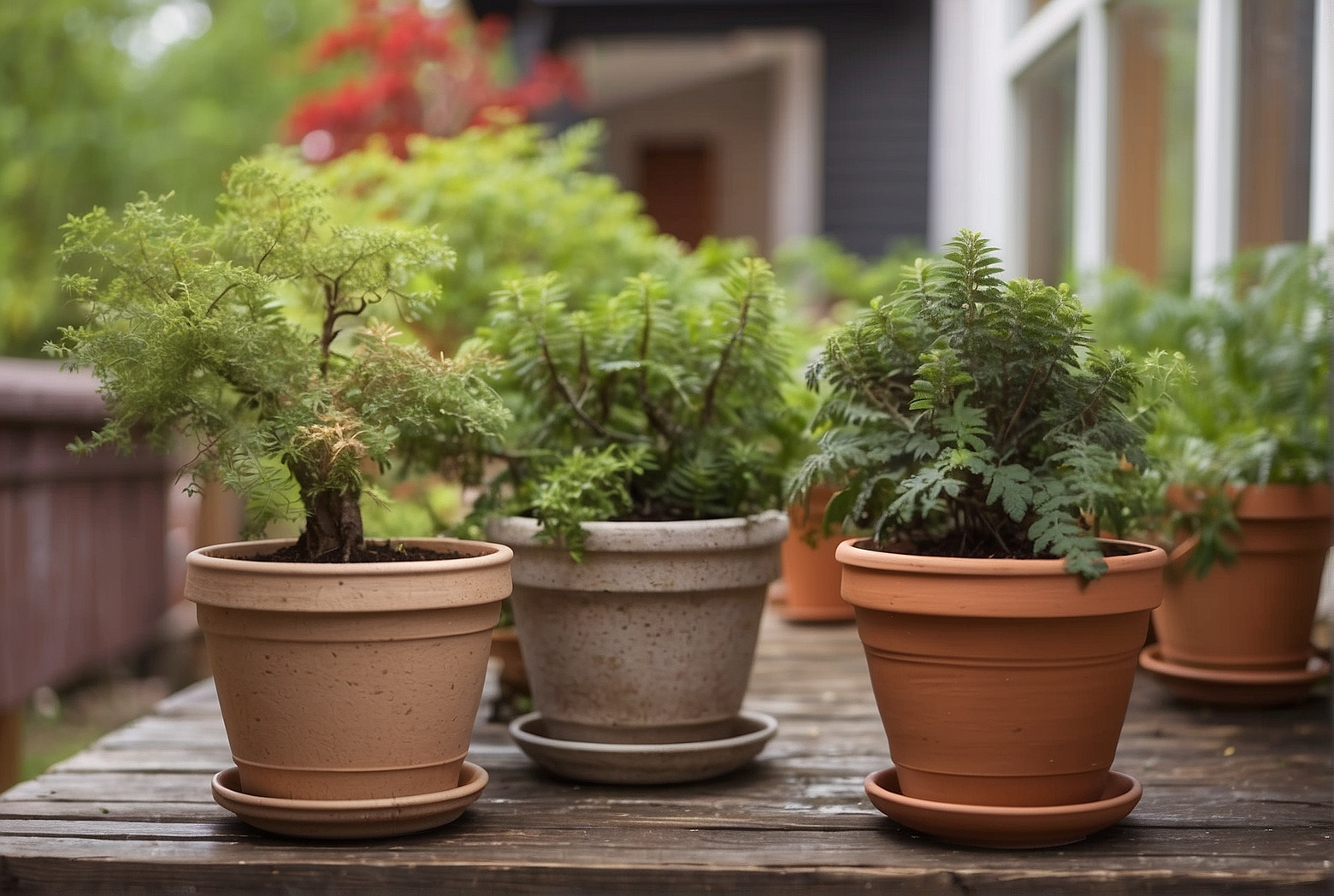If you have potted plants at home, you know how quickly they can dry out. Constantly watering them to keep them alive can be frustrating. Fortunately, there are simple steps you can take to prevent your potted plants from drying out. In this article, we will discuss effective strategies including the use of mulch, proper drainage, and proper watering techniques. With these tips, you can keep your potted plants healthy and thriving.
5 Tips for Keeping Potted Plants Hydrated and Healthy
- Water Regularly: Potted plants need consistent watering to stay hydrated and healthy. Water your plants when the soil feels dry to the touch, and make sure to water deeply so the moisture reaches the roots.
- Use the Right Soil: The type of soil you use is crucial. Choose a well-draining soil rich in organic matter. This helps maintain moisture and provides nutrients for your plants.
- Use Mulch: Adding a layer of mulch on top of the soil helps retain moisture and reduces the need for frequent watering. Mulch acts as a barrier, minimizing evaporation and keeping the soil cool.
- Use Self-Watering Containers: Self-watering containers are an excellent way to keep your potted plants hydrated. These containers have a reservoir at the bottom that slowly releases water into the soil, ensuring consistent moisture levels.
- Monitor the Temperature: The soil temperature can impact how much water your plants need. Hot soil can cause water to evaporate quickly. Monitor the temperature and adjust your watering schedule accordingly to prevent your plants from drying out.
How to Create a Self-Watering System for Your Potted Plants
Creating a self-watering system ensures your plants receive the right amount of water, even when you’re not around. Here’s how to set one up:
Materials Needed:
- A large pot
- A smaller pot
- A drill
- A plastic bottle
- Potting soil
Instructions:
- Drill Drainage Holes: Drill several holes in the bottom of the large pot for drainage.
- Place the Smaller Pot Inside: This smaller pot acts as a reservoir for water.
- Add Soil: Fill the space between the two pots with potting soil.
- Create a Wick: Cut the plastic bottle in half and place the bottom half in the smaller pot to act as a wick, drawing water up from the reservoir.
- Plant Your Plants: Fill the larger pot with soil and plant your desired plants.
- Fill the Reservoir: Fill the smaller pot with water. The water will be drawn up through the wick into the soil, providing your plants with the necessary hydration.
- Check Water Levels: Regularly check the water level in the smaller pot and refill as needed.
By following these steps, you can easily create a self-watering system for your potted plants, ensuring they remain hydrated even when you’re away.
The Benefits of Mulching for Potted Plants
Mulching is essential for preventing potted plants from drying out. Here’s why:
- Moisture Conservation: Mulch reduces evaporation by acting as a barrier between the soil and the air, keeping the soil moist.
- Weed Reduction: Mulch prevents weed growth, reducing competition for water and nutrients.
- Temperature Regulation: Mulch helps keep soil temperatures consistent, promoting healthy plant growth.
- Soil Health Improvement: Mulch adds organic matter to the soil, improving fertility and structure.
In conclusion, mulching is a vital practice for keeping potted plants hydrated and healthy. By conserving moisture, reducing weeds, and regulating soil temperature, mulch significantly enhances the well-being of your plants.

Frequently Asked Questions (FAQ)
1. What is the best way to water potted plants?
- Water deeply and thoroughly until water drains out of the bottom. Allow the soil to dry out slightly between waterings.
2. How often should I water my potted plants?
- Watering frequency depends on the plant type, pot size, and environment. Generally, water every 1-2 weeks.
3. What can I do to keep my potted plants from drying out?
- Use a moisture meter, a moisture-retaining potting mix, and apply mulch to retain moisture.
Conclusion
Preventing potted plants from drying out is simple with regular watering, proper drainage, and adequate sunlight. Use well-draining soil and mulch to retain moisture and monitor soil moisture levels to adjust watering as needed. With these efforts, your potted plants will remain healthy and vibrant.

